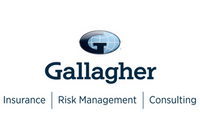How to create a flexible reward and benefits strategy for all ages

When it comes to reward, we live in exciting times. The latest technology makes it possible to explore exactly what employees want and need from reward and to create genuinely inclusive reward programmes in response.
But while technology provides the insight and analytics, creating an inclusive reward strategy that is flexible enough to support employees of all ages relies on a far more traditional tool: effective, ongoing, two-way communication. Here’s how to build your pathway to success.
Understand your baseline
Age is a lens through which to view and understand your workforce. It’s – broadly – useful, in that it enables you to think about the financial issues that may be prevalent within a particular cohort. Those under 50 may be more interested in childcare. Those over 40 may be more concerned about their pensions.
But these assumptions may also be counterproductive. A pension might not be the primary financial concern for older employees. For example, in 2015, Citizens Advice found that debt was a significant focus for many aged over 50.
So, any lens through which an organisation views its workforce –age, gender, ethnicity, location – offers a blurred picture. Within those broad demographics are huge variations in terms of what individuals want from their reward and why.
A successful reward strategy starts with listening. True flexibility grows in organisations that seek to understand employees as individuals. Run surveys. Hold focus groups. Ask what your people value most and least. And work to identify any gaps to inclusion within your current reward programme.
Reach everyone in the business
For this activity to be effective, it needs to encompass everyone in an organisation. Make messaging and branding feel authentic and relevant and think about the channels and formats you are using. Tailor messaging to the different channels and repeat the message in a variety of ways to ensure that it lands.
The other critical point about this drive for engagement is that you must respond and act on the feedback. Reflecting and acting on what your people have communicated demonstrates that you have heard and understood.
Align decisions with organisational values
Once you have gathered the data, it’s important is to assess how, where and why you want to invest your efforts. To simplify this process, use your company purpose and values to guide decisions.
As an example, if your organisation stands out for its commitment to diversity, you may want to prioritise reward opportunities that enable flexible working patterns, enabling employees to fulfil caring duties and their professional commitments. If you are dedicated to wellbeing, you may want to prioritise holistic health opportunities.
The key to this is meshing what employees want with your organisational values. Think about how you would communicate each reward decision you’re making to reflect both factors.
Think fluidity
The final point to consider is personalisation. How and where can you open reward up to give employees genuine choice over what they receive?
Key hallmarks of a mature organisation are two-way respect and trust. The goal should be that employees understand what they receive, why they receive it, and can navigate the consequences of their benefits choices.
This approach requires you to create a pay and reward strategy that you can fully articulate and explain. This may be an uncomfortable door to open in the short term, but over the long term a transparent reward strategy – founded on equity – drives a productive and invested workforce.
So, as you’re creating your reward strategy, stress-test it along the way. Does anything feel inequitable? Are there aspects you would struggle to communicate openly? Those are red flags.
Supplied by REBA Associate Member, Gallagher
Gallagher is a global, integrated HR consulting, benefits administration & technology services provider.






